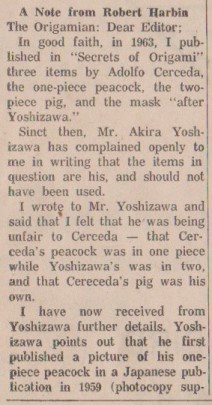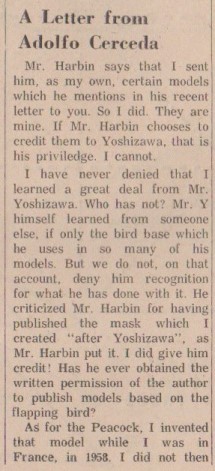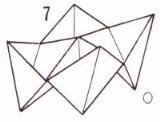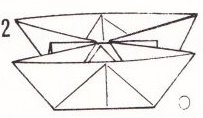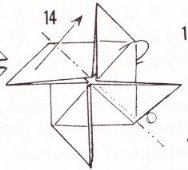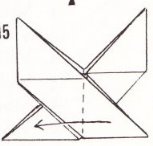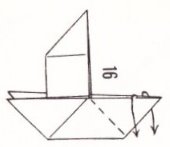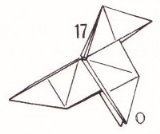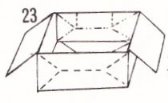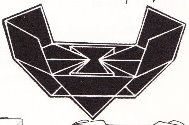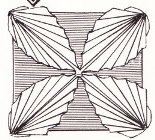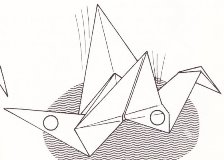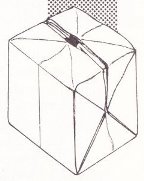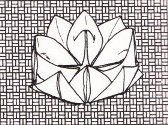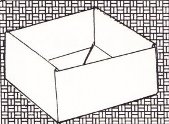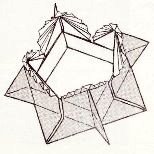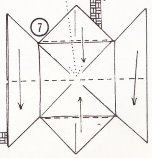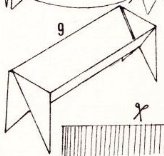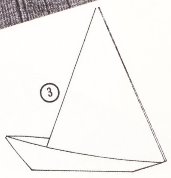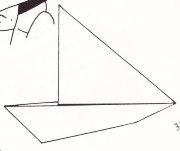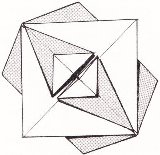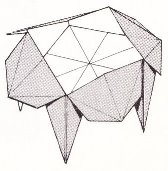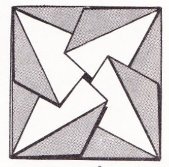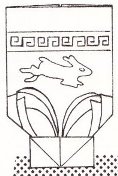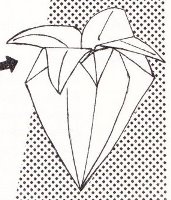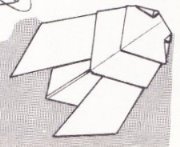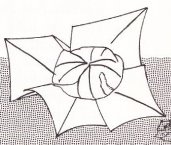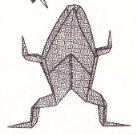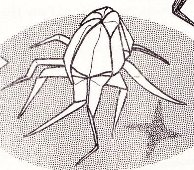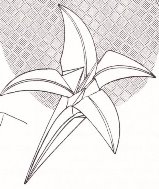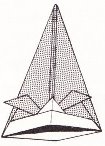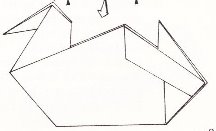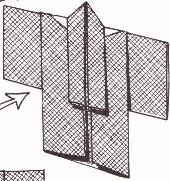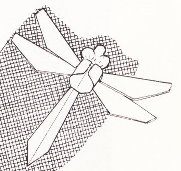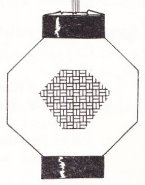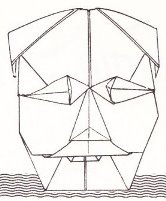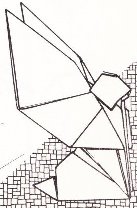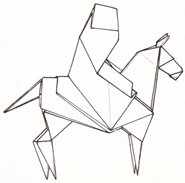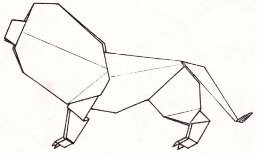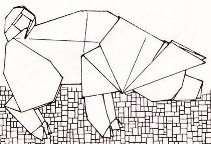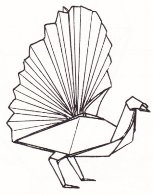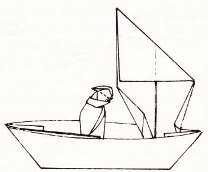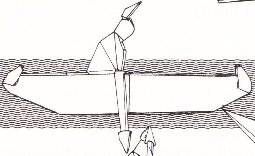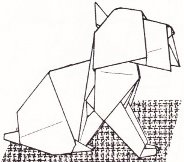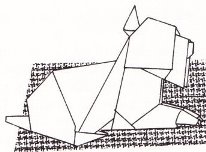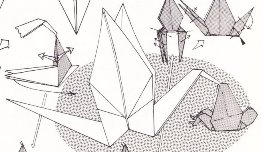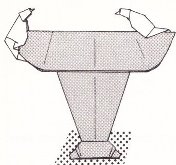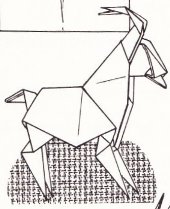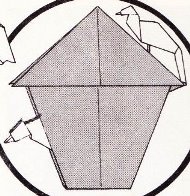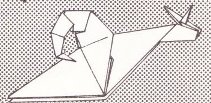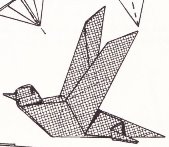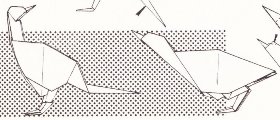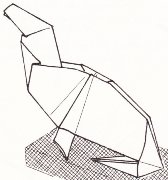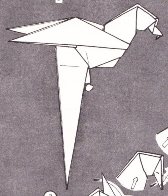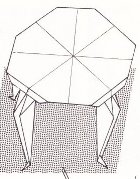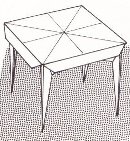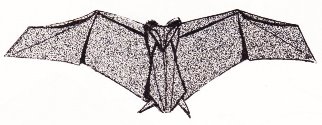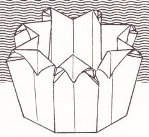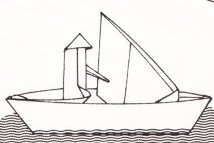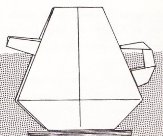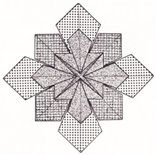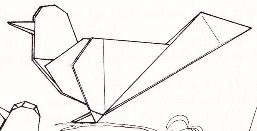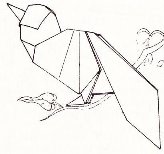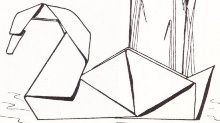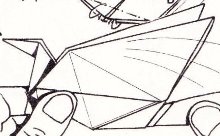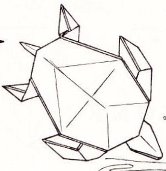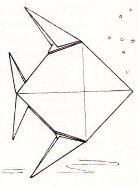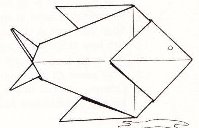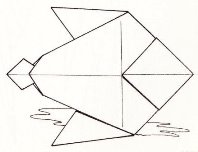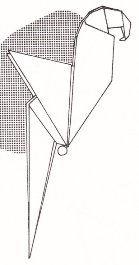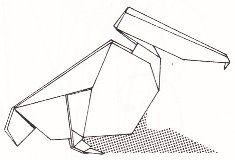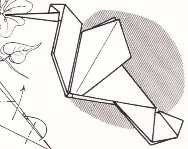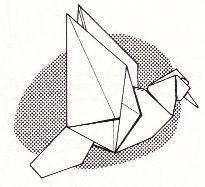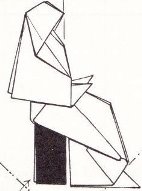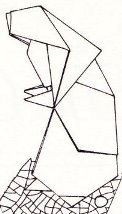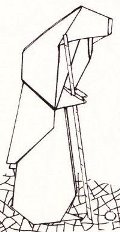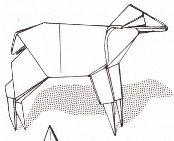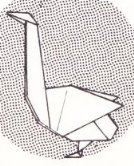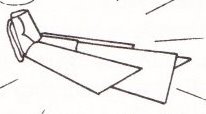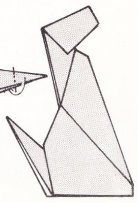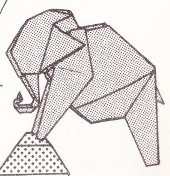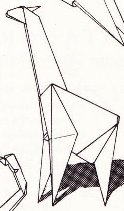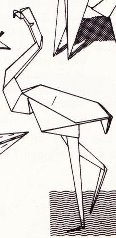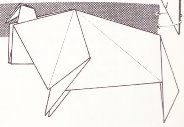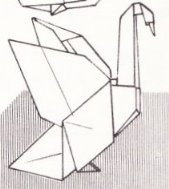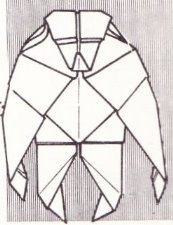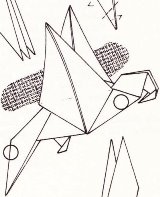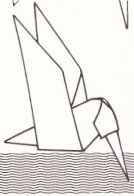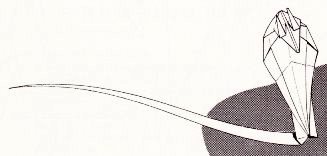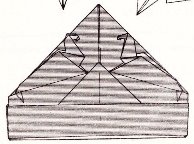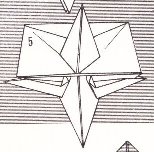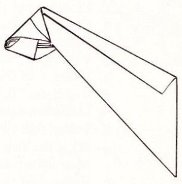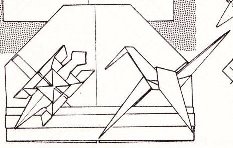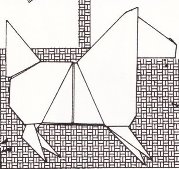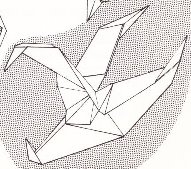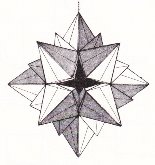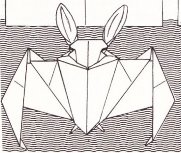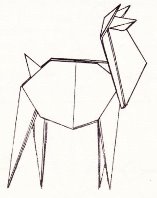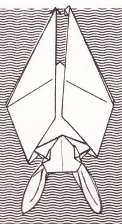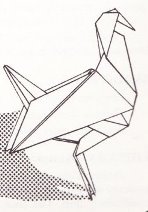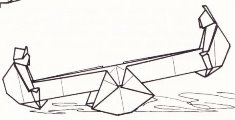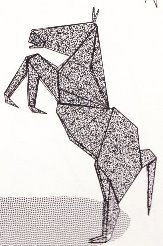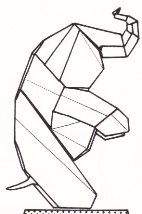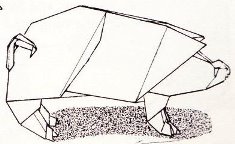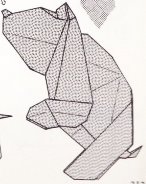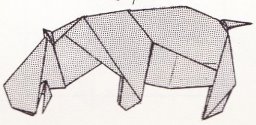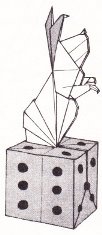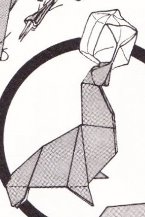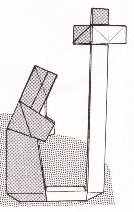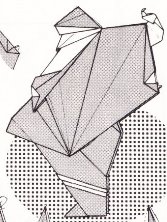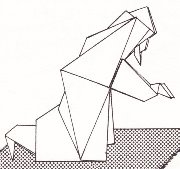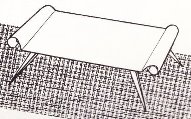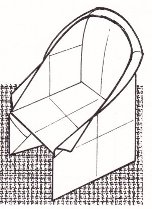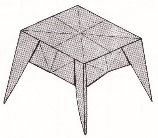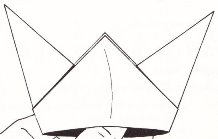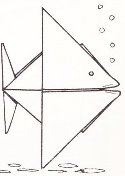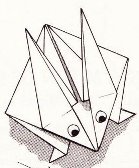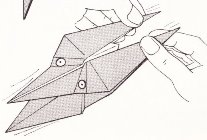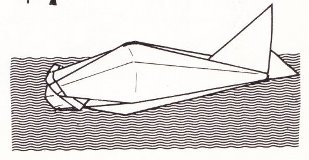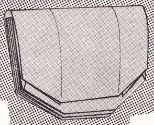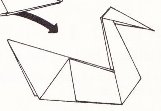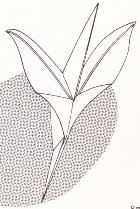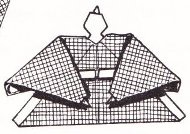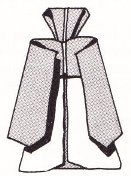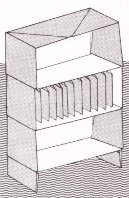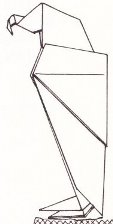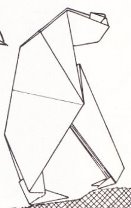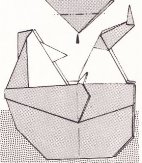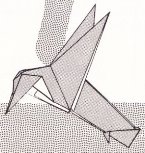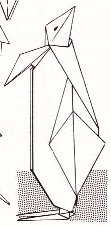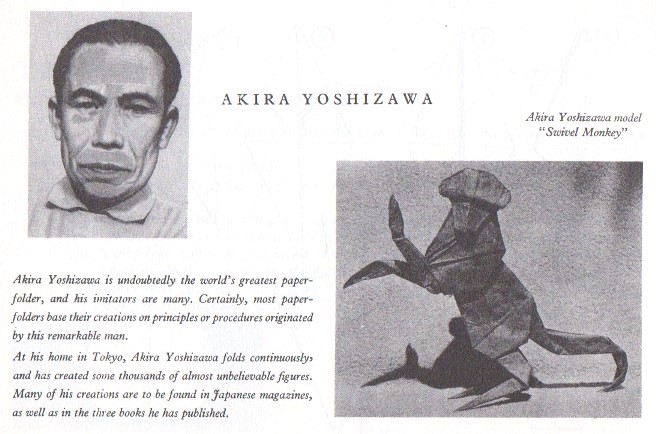| The Public Paperfolding History Project
Last updated 8/8/2024 x |
|||||||
| Secrets of Origami by Robert Harbin | |||||||
| 'Secrets
of Origami Old and New: The Japanese Art of Paper-
Folding', commonly known just as 'Secrets of Origami', by
Robert Harbin, was published by Oldbourne Book Company in
London in 1964 (although the copyright date is 1963). A review of the book appeared in the Origamian Volume 4, Issue 2 of Summer 1964. ********** Introduction There is an Introduction by Alfred Bestall (which is of little historical interest) and an Author's Preface which says, 'thanks to the names and addresses supplied to me by Mr Gershon Legman while I was compiling Paper Magic ...' and mentions that Robert Harbin and Samuel Randlett have been co-ordinating their efforts to avoid duplication between this book and Randlett's forthcoming book 'The Best of Origami'. Unfortunately this co-ordination doesn't seem to have worked very well. Both books contain diagrams for the Flapping Bird, the Cicada, Persimmon, the Lover's Knot and Harry Weiss's 'Tumbling Chan'. **********. The main part of book contains diagrams for a number of unattributed (traditional) designs, often with an indication of their origin, or where they were collected from, but the the bulk of the book is devoted to explaining the designs attributed to specific paperfolders. Many of these are spread throughout the first part of the book but there are specific sections devoted to the designs of Robert Harbin himself, Florence Temko, Ligia Montoya, John M Nordquist, Jack J Skillman, Adolpho Cerceda, Neal Elias, Frederic G Rohm, Robert Neale and George Rhoads. Where the designer of a paperfold is mentioned the author often gives brief information about them. Describing himself, the author says: 'Origami has become his all-absorbing interest and his one pleasure is to be able to illustrate and explain his own creations and those of the many friends he has made through this fascinating hobby.' ********** Unfortunately not all the origins given, or the attributions made, are accurate. In particular: Several designs are said to be of Japanese origin when in fact they originated in Western Europe. These are: The Flapping Bird, the Waterbomb, the Waterlily and the Box. The Teapot is attributed to N Montero although it is actually a design of Miguel de Unamuno's. The Three-Dimensional Whale is attributed to Thoki Yenn although he was not yet designing uncut paperfolds at this time. The Moor at Prayer is attributed to Miguel A Salvatella although it is in fact a design by Natividad Sánchez-Ferrero. It is also worth noting that although the Party Hat (the Nagakabuto) is a Japanese design, the author does not appear to be aware of this. ********** Controversy arose over the inclusion / attribution of three designs, the Everyman Mask, Adolpho's Pig and Adolpho's peacock. 'The Origamian' of Summer 1969 contained a letter from Robert Harbin which explained that Yoshizawa had complained about the inclusion of these three designs in the book.
*** Adolpho Cerceda's reply to this letter appeared in the following Origamian for Autumn 1969.
********** The entry for Isao Honda in the bibliography notes: 'In all Honda books there are simplified explanations of many of the works of Akira Yoshizawa (notably The Peacock), but no credit is given.' ********** The majority of the works in the book are uncut. There is a note about Fred Rohm's Circus Pony (in which cuts are used to separate the front legs and to release the ears) which reads 'This design is an example where two cuts have been used to produce a result so wonderful that the means have been justified.' ********** Designs which are not attributed to an individual paperfolding designer Traditional Western European Designs The Multiform A name Harbin gives to a sequence of folds that produces the Salt-Cellar, The Catamaran (the Double Boat), the Windmill, the Seat or Vase, the Boat with Sail, the Hobby-Horse (the Cocotte / Pajarita), the Container (the Junk Box) and the Chinese Junk.
********** Shell Decoration (Glued) (said to be Spanish)
********** The Flapping Bird (said to be Japanese)
********** Water Bomb (said to be Japanese)
*********** Water Lily ((said to be Japanese) - The Lotus
********** Box (said to be Japanese) - The Blintz Box / Masu
********** Fancy Box (Box said to be Japanese: Pleating Argentinian) - The Spanish Box
********** The Lover's Knot Explained as the base of the Husky (see below)
********** The Crib - The Trough Said to be traditional adapted by Ligia Montoya.
********** Traditional Japanese Designs Boat with Sail (said to be Japanese) - The Yacht A second simple variation is shown later in the book.
********** Novelty Purse (said to be Japanese)
********** Fancy Box on Legs (said to be Japanese) - The Hibachi
********** Japanese Purse (said to have been 'discovered' (presumably collected?) by John M Nordquist)
********** Rabbit Vase - The Urn (said to have been obtained by John M Nordquist from the Frederick Starr collection).
********** Japanese Vase (said to have been collected by John M Nordquist)
********** Cicada (said to be Japanese) - The Kabuto Base Cicada
********** Inside-Out Boat (said to be Japanese) (said to have been collected by Lillian Oppenheimer)
********** Persimmon (said to be Japanese)
********** Jumping Frog (said to be Japanese) - The Blow-up Frog The diagrams do not mention that this design can be inflated.
********** Octopus (Cut) (said to be Japanese)
********** Lily (said to be Japanese)
********** Party Hat - The Nagakabuto There is no mention of the Japanese origin of this design.
********** Whale (said to be Japanese)
********** Water Fowl (said to be Japanese)
********** Kimono (said to be Japanese)
********** Dragonfly (from the Kan No Mado) The text mentions that 'Senorita Ligia Montoya has produced a dragonfly without making any cuts.'
********** Lantern (said to be Japanese) - The Long Lantern
********** Variable Patterns Traditional Designs (Froebelian Folds of Beauty) The text mentions that 'Senorita Ligia Montoya has produced some really beautiful designs - so many, in fact, that they could be the subject of a complete book.' ********** Squashed Bird Base Patterns (6 designs) (One of the designs is attributed to both Adolpho Cerceda and Samuel Randlett) ********** Designs attributed to a specific paperfolding designer (in alphabetical order not in the order in the book) Designs attributed to Adolpho Cerceda: Everyman Mask (said to be after Akira Yoshizawa)
********** Adolpho's Angel
********** The Moor on Horseback
********** Lion ( a compound design)
********** Adolpho's Pig (a compound design)
********** Adolpho's Peacock From a 2x1 rectangle
********** Designs attributed to Neal Elias: Elias's Fisherman in a Boat
********** Hiawatha
********** Sitting Scottie Dog
********** Reclining Scottie Dog
********** Stork with Baby From two partially connected squares.
********** Bird Bath
********** Goat
********** Dove Cote
********** Designs attributed to Elias Gutierrez Gil: Snail
********** Designs attributed to Robert Harbin: Bird in Flight
********** Japanese Blue Pheasant and Mate
********** Seal
********** Harbin's Macaw
********** Queen Anne Table
********** Card Table
********** Harbin's Bat From an equilateral triangle.
********** Fancy Bowl From a hexagon
********** Fisherman in a Boat
********** Designs attributed to N Montero: (although it is actually a design of Miguel de Unamuno) Teapot
********** Designs attributed to Ligia Montoya: Montoya Star (Flat, compound, glued, design)
********** Tropical Bird
********** Bird of Paradise
********** Swan
********** Sea Horse
********** Montoya's Flapping Bird
********** Turtle From 2x1 rectangle folded into a double bird base.
********** Angel Fish
********** Fish Number One (Cut)
********** Fish Number Two
********** Montoya's Macaw
********** Pelican From an equilateral triangle.
********** Humming Bird
********** Pigeon
********** The Creche - a series of figures and animals comprising: The Virgin Mary (seated)
********** Standing Angel
********** Kneeling Angel
********** A Woman
********** Old Woman with Staff
********** Shepherd with Crook
********** Sheep
********** Goose
********** The Infant Christ
********** Designs attributed to Robert Neale: Watchful Dog
********** Neale's Elephant
********** Giraffe
********** Flamingo
********** Bull (three-legged)
********** Matador
********** Goose
********** Gorilla
********** Parakeet in Flight
********** Neale's Humming Bird From an equilateral triangle
********** Neale's Cobra From an isosceles triangle
********** Designs attributed to John M Nordquist: Nordquist's Bird
********** Conversation on Seal Rock
********** Pickle-Puss
********** Maple Seed (Cut)
********** Designs attributed to Yoshinaga Ogawa: Helmet, with Tortoise and Crane Said to have been collected by John M Nordquist and made by Yoshinaga Ogawa of the Ogasawara School, probably in Kyoto during the Early Meiji Era (1868 - 1912)
********** Gift Package - The Square Letterfold Attributed to Yoshinaga Ogawa, and said to have been collected by John M Nordquist.
********** Designs attributed to Samuel Randlett: Husky Dog (developed from the Lover's Knot) (with Alan Cohen)
********** Gargoyle
********** Designs attributed to George Rhoads: Rhoad's Ornament A glued modular 3D star
********** Rhoad's Bat
********** Rhoad's Llama From an irregular shape
********** Sleepng Bat
********** Turkey
********** Designs attributed to Fred G Rohm: See-Saw
********** Circus Pony (Cut)
********** Circus Elephant
********** Rohm's Pig
********** Snuffy the Bear
********** Hippopotamus
********** It's Magic From a 2x1 rectangle
********** Performing Seal From a 3x1 rectangle
********** Vera Cruz From a 3x1 rectangle
********** Santa Claus
********** Designs attributed to Miguel A Salvatella: Moor at Prayer The text notes 'I understand from Senor Elias Gutierrez Gil that this model was folded by Miguel A Salvatella, who is the author of a fine book on paperfolding.' However, in fact this design is by Natividad Sánchez-Ferrero, a close friend of one of Unamuno's daughters.
********** Designs attributed to Jack J Skillman: Couch
********** Double Boat
********** Armchair
********** Salt Cellar Table (also attributed to Uchiyama)
********** Designs attributed to Dr Vicente Solorzano Sagredo: Norseman's Helmet
********** Solorzano's Angel Fish The text notes 'This was one of the first models sent to me by Gershon Legman.'
********** Designs attributed to E D Sullivan: Pop-Up Rabbit
********** Scissorbill
********** Designs attributed to Thoki Yenn: Three-Dimensional Whale It is, however, my understanding that this was not in fact Thoki Yenn's design.
********** Designs attributed to Florence Temko: Stocking Case (said to be an adaptation of a popular fold)
********** (Method for folding) The Simple Swan
********** Three-Petalled Flower
********** Designs attributed to Uchiyama: (presumably Okimasa (Kosho) Uchiyama since it is he who is mentioned in the bibliography) Japanese Gentleman (Cut)
********** Japanese Lady (Cut)
********** Book Case
********** Salt Cellar Table (also attributed to Jack L Skillman)
********** Designs attributed to Miguel de Unamuno y Jugo: (but see entry for N Montero above) Unamuno's Vulture
********** Unamuno's Ape
********** Designs attributed to Harry Weiss: Tumbling Chan
********** Ruby-Throated Humming Bird
********** Kiwi
********** Designs attributed to Akira Yoshizawa: There is a photo, but no diagrams, of Yoshizawa's Swivel Monkey. The text does not mention that this is a compound design.
********** |
|||||||
